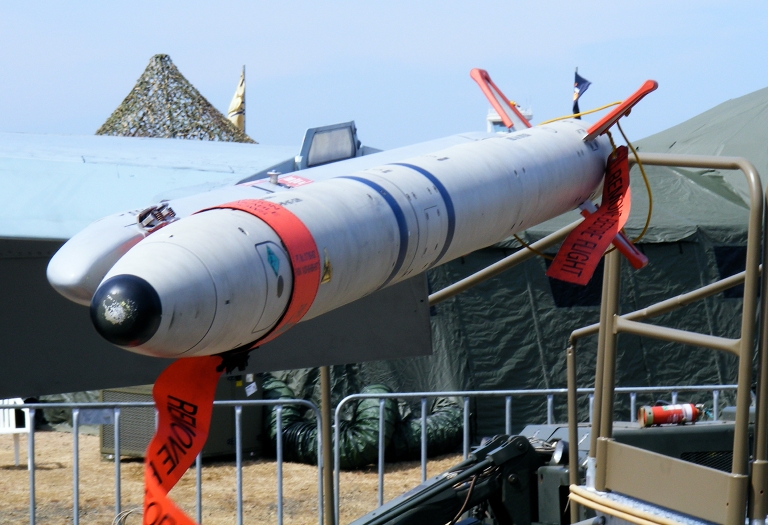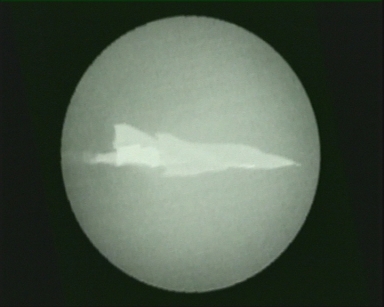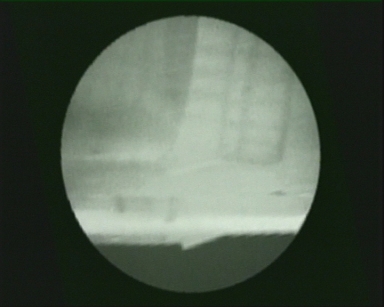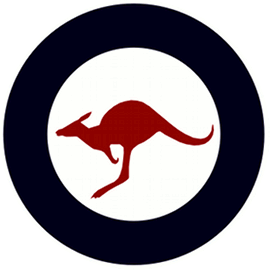|
||||||||||||||||||||||
![Home - Air Power Australia Website [Click for more ...]](APA/APA-Title-Main.png) |
||||||||||||||||||||||
![Sukhoi PAK-FA and Flanker Index Page [Click for more ...]](APA/flanker.png) |
![F-35 Joint Strike Fighter Index Page [Click for more ...]](APA/jsf.png) |
![Weapons Technology Index Page [Click for more ...]](APA/weps.png) |
![News and Media Related Material Index Page [Click for more ...]](APA/media.png) |
|||||||||||||||||||
![Surface to Air Missile Systems / Integrated Air Defence Systems Index Page [Click for more ...]](APA/sams-iads.png) |
![Ballistic Missiles and Missile Defence Page [Click for more ...]](APA/msls-bmd.png) |
![Air Power and National Military Strategy Index Page [Click for more ...]](APA/strategy.png) |
![Military Aviation Historical Topics Index Page [Click for more ...]](APA/history.png)
|
![Intelligence, Surveillance and Reconnaissance and Network Centric Warfare Index Page [Click for more ...]](APA/isr-ncw.png) |
![Information Warfare / Operations and Electronic Warfare Index Page [Click for more ...]](APA/iw.png) |
![Systems and Basic Technology Index Page [Click for more ...]](APA/technology.png) |
![Related Links Index Page [Click for more ...]](APA/links.png) |
|||||||||||||||
![Homepage of Australia's First Online Journal Covering Air Power Issues (ISSN 1832-2433) [Click for more ...]](APA/apa-analyses.png) |
||||||||||||||||||||||
| Last Updated: Mon Jan 27 11:18:09 UTC 2014 | ||||||||||||||||||||||
|
||||||||||||||||||||||
|
||||||||||||||||||||||
![Home - Air Power Australia Website [Click for more ...]](APA/APA-Title-Main.png) |
||||||||||||||||||||||
![Sukhoi PAK-FA and Flanker Index Page [Click for more ...]](APA/flanker.png) |
![F-35 Joint Strike Fighter Index Page [Click for more ...]](APA/jsf.png) |
![Weapons Technology Index Page [Click for more ...]](APA/weps.png) |
![News and Media Related Material Index Page [Click for more ...]](APA/media.png) |
|||||||||||||||||||
![Surface to Air Missile Systems / Integrated Air Defence Systems Index Page [Click for more ...]](APA/sams-iads.png) |
![Ballistic Missiles and Missile Defence Page [Click for more ...]](APA/msls-bmd.png) |
![Air Power and National Military Strategy Index Page [Click for more ...]](APA/strategy.png) |
![Military Aviation Historical Topics Index Page [Click for more ...]](APA/history.png)
|
![Intelligence, Surveillance and Reconnaissance and Network Centric Warfare Index Page [Click for more ...]](APA/isr-ncw.png) |
![Information Warfare / Operations and Electronic Warfare Index Page [Click for more ...]](APA/iw.png) |
![Systems and Basic Technology Index Page [Click for more ...]](APA/technology.png) |
![Related Links Index Page [Click for more ...]](APA/links.png) |
|||||||||||||||
![Homepage of Australia's First Online Journal Covering Air Power Issues (ISSN 1832-2433) [Click for more ...]](APA/apa-analyses.png) |
||||||||||||||||||||||
| Last Updated: Mon Jan 27 11:18:09 UTC 2014 | ||||||||||||||||||||||
|
||||||||||||||||||||||
| Matra-BAe
AIM-132
ASRAAM - The RAAF's New WVR AAM |
||
|
||
 77 SQN RAAF F/A-18A with wingtip mounted ASRAAM WVR AAM at Avalon in 2007 (Fuji S5600). The Matra-BAe AIM-132 Advanced Short Range Air Air Missile (ASRAAM) was selected during the late 1990s as the RAAF's new Within Visual Range (WVR) AAM, and is planned for use on the F/A-18A+, and possibly other RAAF types. This capable missile is currently deploying to UK RAF squadrons, providing a quantum leap in capability over the established AIM-9 Lima all aspect missile. The RAAF's AIR 5400 requirement stemmed from a major in regional capabilities, with the PLA-AF to deploy in excess of 350 potent long ranging Sukhoi Flanker variants (300+ Su-27PK/SK and up to 60 or more Su-30MKK), and the InAF deploying 50 Su-30MKIs (including the would be TNI-AU buy), armed with the very effective Vympel R-73M/AA-11 Archer WVR AAM and late models of the Vympel R-27/AA-10 Alamo BVR AAM. Malaysia is at this time negotiating for the Su-30MK. It is expected that most Flanker users will also acquire the newer R-77/AA-12 Adder BVR AAM, regarded to be a Russian equivalent to the US AIM-120A AMRAAM, as well as the R-74 digital variant of the R-73 series. The RAAF will in turn acquire the current build AIM-120B AMRAAM to fulfill the BVR missile requirement in AIR 5400, replacing the now obsolescent AIM-7M Sparrow semi-active homing AAM. The RAAF committed in 1998 to stretch the Hornet with a view to introducing its replacement in the 2010-2015 timescale. The aircraft will be fitted with new countermeasures, slightly faster AYK-14 mission computers, JTIDS, and the APG-73 RUG II AI radar, a development of the APG-65 radar family used on the F/A-18C/D and F/A-18E/F.
The RAAF's new WVR AAM is required to outperform the Archer, with superior kinematics and a better high off-boresight capability, using a Helmet Mounted Display (HMD). The ASRAAM, the Rafael Python 4 and the AIM-9X were competitively evaluated, with the ASRAAM selected over the other two contenders. The AIM-9X is a fundamental redesign of the AIM-9, retaining only the existing 4.5 in motor, warhead and fuse, and using a new Focal Plane Array seeker and thrust vectoring tail control section. The Israeli Python 4 is a unique missile, discussed in an earlier issue of Air Power International. The advanced but arguably immature German Bodensee-Geratetechnik Iris T was not evaluated. The Iris T combines large aerodynamic strakes and thrust vectoring, and recent reports suggest the incorporation of a Focal Plane Array seeker to replace the previous scanned seeker. The Su-27/30 is of particular concern since it aerodynamically outclasses the F/A-18A+ in virtually every category, and challenges the Hornet in the area where it has traditionally excelled, which is tight low speed manoeuvring. Therefore the selection of the ASRAAM provides a capability intended to offset this advantage.
The AIM-132 ASRAAM - An Historical Perspective
The ASRAAM is a revolutionary rather than evolutionary step in AAM design, as it embodies a range of new technologies and a design philosophy which is both new and unique in this class of missiles. Historically, the origins of the ASRAAM date back to the eighties, when a Memorandum of Understanding (MoU) was signed between a primarily European group and the Americans over the future of AAM designs for NATO aircraft. The MoU divided responsibility for the next generation missiles along the division of the new WVR missile to the Europeans, and the radar guided Beyond Visual Range (BVR) missile to the US. The BVR missile solidified into the AIM-120 AMRAAM, which despite a protracted development process, has become a superb in service weapon. The "European" consortium comprised four nations which split the share of development costs. The four players were the UK (42.5%), Germany (42.5%) and Norway (5%), with Canada (10%) which was the only odd player in the group. The intent of the arrangement was for the US to supply the AMRAAM, and the Europeans to supply the ASRAAM, at preferential prices. In this fashion the Europeans sought to capitalise on their past experience designing heatseeking missiles, and the US on their experience with BVR missiles. Since the US had at that time designed and manufactured the AIM-7 Sparrow and AIM-54 Phoenix, and the Germans developed the then potent ALASCA and jointly with the Norwegians, the Viper, the division made very good sense both technically and politically. The early ASRAAM definition envisaged a missile shorter, and fatter than the established Sidewinder, which used inertial midcourse guidance and an advanced Infra-Red seeker for terminal homing. To accommodate the then wide range of launch rails in service, the ASRAAM was to use an adaptor, termed a Missile Support Unit, which would remain on the rail after launch. BAe Dynamics and Bodensee Geratetechnik (BGT) formed a joint company, named BBG, for this purpose. Definition of the missile design began in 1984. As is often the case with complex multilateral arrangements, the ASRAAM began to slowly unravel. By February, 1988, US unhappiness with the direction of the project led to a series of intended design changes. The weakening position of the USSR, and Europe's strengthening economic position both significantly reduced US interest in the program. By February, 1989, the missile was ready to enter the full scale development phase, but the program was already dying a political death. Germany pulled out in July, 1989, thereby killing the multinational ASRAAM project off entirely.
ASRAAM trial launch at the
USAF Eglin test range (USAF). The UK was not happy with this situation, by any means. The Soviet deployment of the Su-27 equipped the AA-11 Archer seriously challenged the unmanoeuvrable Tornado ADV, and clearly the new Eurofighter would need a high performance missile to be effective. The RAF has always taken the air combat manoeuvring game seriously, and the prospect of a world full of Flankers and Fulcrums shooting some very good missiles was a capability which would have to be balanced, at the least. Clearly the collapsed AIM-132 ASRAAM project provided a good starting point for a UK national WVR AAM development project. As a go-it-alone UK effort, it was no longer necessary to make either operational or technical compromises, to satisfy the pork-barrelling needs of other players. This meant that the "new" ASRAAM could be built to what the RAF regarded to be its optimal operational specification, and the choice of optimal components to meet such a spec could be made. By August, 1989, the ball was rolling, and BAe invited bids from subcontractors. In October, the Hughes SBRC (Santa Barbara Research Centre) Focal Plane Array Indium Antimonide imaging device was selected for the missile's seeker. By 1990, with the collapse of Warsaw Pact, defence budgets began to rapidly contract in the West, and the UK MoD subsequently competed the BAe ASRAAM design against a joint GEC-Marconi and Matra bid with the heatseeking MICASRAAM missile, and a German BGT bid. Evaluation of the bids continued until early 1992, when the UK MoD announced that the BAe bid had been selected, and a USD 912 million contract was awarded for development, production and supply of the ASRAAM missile for the RAF. Full Scale Development commenced in March, 1992, and the UK MoD awarded an additional contract for missile supply in May, 1994. The missile is expected to be operationally deployed at some time in the latter half of next year. It will be carried by the new Eurofighter, the Tornado ADV and IDS, the Harrier GR.7, the Sea Harrier, the Jaguar and if required, the Hawk combat capable trainer.
The AIM-132 ASRAAM - A Technical Perspective
The ASRAAM is radically different in many respects from other established and development missiles designed for WVR combat. The missile is heavily optimised for best possible pre-merge performance, following the contemporary dictum that whoever gets the first shot off is likely to win. Therefore the missile is built from the outset to acquire an opponent and successfully engage it at maximum range. Should the first shot not succeed, the missile is designed to provide close-in performance to destroy the target aircraft at close quarters. The key to the missile's acquisition range performance and high off-boresight capability is the 128 x 128 element Focal Plane Array seeker. The Hughes SBRC device is manufactured as a single Indium-Antimonide die, and is in effect a single chip low resolution thermal imager sensitive in the 0.5 to 5.4 micron band. The device is typically cooled to 80 Kelvin using a Hymatic Joule-Thompson Argon, Nitrogen or air driven gas expansion refrigerator fed from an onboard bottle or launcher umbilical. The FPA is mounted on a two axis gimbal which provides full forward hemisphere coverage. FPA devices of this ilk provide revolutionary capabilities in comparison with traditional rotating reticle seekers. First and foremost, the FPA dramatically increases sensitivity, because it "stares" continuously at the target thus exposing a much larger detector area for much longer to the target's emissions. Moreover, because it uses a television style scan, rather than conical reticle scan, it is for all practical purposes immune to flares as well as blinking infrared jammers. The only robust countermeasure is a laser with sufficient power to blind it or burn it out.
F/A-18A
wingtip
station carrying an ASRAAM (C. Kopp) Because the FPA produces in effect a TV picture of the target scene, it is virtually impossible to break lock by violent manoeuvre at any range, moreso since the gimbal mechanism will adjust the line of sight of the FPA. The target airframe is tracked using contrast lock techniques similar in concept to those used by the Maverick ASM, and therefore escape from seeker coverage is geometrically impossible providing the airframe can keep up. The FPA seeker is mounted in the nosecone, under an optical
filter dome, together with the cooling assembly and support electronics. Aft of the seeker section is the electronics, fusing and warhead section. The electronics section contains the DASA built inertial package, which is an ASRAAM specific 3-axis solid state accelerometer/fibre optical gyro package with sufficient navigational accuracy to fly the missile blind into the acquisition basket, where the seeker acquires the target. This is indeed conceptually the same model as is used by radar guided missiles such as the AMRAAM. The electronics section also contains the video signal processing electronics which analyse the picture produced by the FPA seeker, these are implemented in Application Specific Integrated Circuits (ASIC), ie custom Silicon implementing algorithms developed by BAe Dynamics. A flight control processing package runs software which manages the missile state, implements the navigation and autopilot algorithms, and the modified proportional navigation homing algorithm. The BAe Dynamics custom designed processing package uses an array of 800 series Transputer chips, and is regarded to be the most computationally powerful ever fitted to a missile. The software is written in US DoD standard ADA language, a high level macro language is employed to automatically generate source code for compilation. The missile can be fired in both Lock-On Before Launch (LOBL) mode as a conventional heatseeker, or in Lock-On-After-Launch (LOAL) mode, in a manner more akin to a BVR radar guided weapon. The missile can also be used as an expendable Infra-Red Search and Track unit. The missile has two umbilical interfaces, providing both a digital and analogue interface, and compatibility with Sidewinder and AMRAAM umbilicals. Support is provided for aircraft electrical power, and a thermal battery is used for inflight power supply. The interfaces allow the missile to be cued by a Helmet Mounted Sight or Display (HMS/HMD) or by aircraft radar, and a Sidewinder tone is produced for the pilot's headset. In UK service, the missile will be cued by the new Pilkington Optronics HMD, currently in development for the new EF 2000 Eurofighter Typhoon. The Eurofighter avionic system includes the PIRATE IRS&T system, which will also have the capability to cue the ASRAAM to a target, enabling a totally passive (ie radar silent) engagement. The Pilkington Optronics HMD will have the capability to project raster video from the PIRATE IRS&T on to the visor, and will include NVG style image intensifier tubes embedded in the helmet, thus providing a true night vision capability covering the pilot's whole field of view (FOV). The ASRAAM warhead is a compact DASA built blast fragmentation design, fired by a Thorn-EMI laser proximity fuse, which is a conventional approach for a Western WVR missile. A backup impact fuse is employed. Since the ASRAAM achieves high accuracy, it is in effect a "hittile" and therefore arguably the warhead serves the purpose of guaranteeing the otherwise almost certain kill produced by a hit with a high velocity missile airframe. The missile's REMUS powerplant is unique in several respects. Manufactured by Royal Ordnance, Summerfield, the motor uses a proprietary strip steel laminate casing, rather than a conventional machined tubular casing. The laminated casing is stiffer, lighter, and much more tolerant of physical mishandling or shrapnel/spall/bullet damage in comparison with conventional designs. The casing forms a combustion chamber which exhausts through a blast tube and fixed geometry nozzle. With a 6.5" external diameter, the motor contains roughly 70% more propellant per unit length in comparison with the established Mk.36 Sidewinder motor. Using a low smoke, low flame propellant, the motor is designed with a boost only burn profile. As a result, the missile exhibits arguably the best kinematic performance of any contemporary WVR missile design. The missile is controlled by a high torque servo package driving four independent tail surfaces. The Lucas Aerospace actuator package is wrapped around the exhaust blast tube. The ASRAAM airframe is aerodynamically very clean, designed for minimal drag at high speeds. The only geometrically compromising features are the three Sidewinder standard launch rail lugs.
Performance and Operational Philosophy
The ASRAAM is designed to enable the early engagement of opposing fighter aircraft, and this is reflected in the missile's combination of highly sensitive FPA seeker, midcourse inertial package and high energy motor. In a pre-merge engagement scenario, the FPA seeker allows target acquisition at significant BVR ranges, and the inertial midcourse guidance package means that the missile can be fired if necessary even blind to intercept an inbound threat aircraft. The high energy motor provides very high acceleration, and range performance which has traditionally been the domain of radar guided BVR missiles. Like its BVR active radar counterpart, the AMRAAM, ASRAAM will fly itself to a geometrically appropriate position, activate its seeker, acquire the target and home to impact. Because a short burn motor is used, and the FPA seeker is of course passive, the victim aircraft may have little if any warning of the inbound ASRAAM.
The reflects the RAF's current air combat doctrine which regards the bomber threat as the primary objective of an air defence fighter. Therefore the ASRAAM is built to enable a defending fighter to break up opposing fighter escorts in the premerge, to provide the defending fighter with an early opportunity to engage the escorted bomber package. The ASRAAM can be fired in multiple round rippled salvo launches. While the premerge optimisation of the ASRAAM design is perhaps its most remarkable design feature, the missile is also designed to be highly effective in close combat. It achieves this by using its high off-boresight capability, inertial midcourse capability, and high acceleration. The ASRAAM can be fired at very high G loading / Angle of Attack (AoA), cued by a Helmet Mounted Sight, at targets within the pilot's entire field of view. This means that the missile can be fired "over-the-shoulder" to engage a threat in the beam or aft sector of the launch aircraft, providing that the pilot can sight the target. Because midcourse inertial guidance is used, the target need not be in the seeker's field of view at launch. This is a design feature which is at this time unique to the ASRAAM. As a result, the ASRAAM is a particularly attractive defensive missile for a bomber, as it can fire at a pursuing fighter even at an appreciable range. This capability significantly complicates life for fighters attempting to engage an ASRAAM equipped bomber. A Helmet Mounted Display will be required for the bomber. It will be interesting to see whether the RAAF opts to so equip its 35 strong fleet of F/RF-111C and F-111G aircraft. While an avionic upgrade for the F-111G has been approved in principle, the specific configuration of the upgrade is still being worked on. Fitting the F-111 fleet for the ASRAAM would provide a respectable air defence capability (with 6 rounds) with the ability to effectively engage hostile LRMP, reconnaissance and transport aircraft at extended ranges, while making the F-111 a much less inviting target for hostile fighters. The digital AMRAAM compatible interface will be required to fully exploit the missile.
It is worth noting that over-the-shoulder launching is a fundamentally different approach to that taken by the Russians, who have addressed this problem by producing a rearward firing variant of the R-73 Archer, the R-73R, which uses an additional booster to overcome the aircraft's forward velocity. The rearward firing Archer is cued by the Flanker's NIIP N-O12 tail warning radar. In comparison with its contemporaries, the AA-11 Archer, the Rafael Python 4, the BGT Iris T and the AIM-9X, the ASRAAM is fundamentally different in both design philosophy and intended mode of operation. Its extended range performance provides a unique BVR capability, which in effect overlaps the capabilities of radar guided BVR missiles. Its combination of heatseeking and inertial midcourse guidance provides it with a much larger engagement envelope in close combat. In turn, its different design philosophy will by default impose a quite different air combat manoeuvring model, one which is designed to exploit the missile's uniquely different characteristics. It is thus very difficult to make meaningful comparisons between the ASRAAM and its rivals, on the basis of trivial performance specs alone. The ultimate metric of effectiveness with any missile design is its achieved kill ratio in live combat. This kill ratio is a function of missile capability, launch aircraft capability, air combat doctrine and the pilot's ability to exploit all three to best advantage. The adoption of the ASRAAM will require that the RAAF 81 WG evolve a new package of ACM tactics and doctrinal model, to best exploit this weapon's unique capabilities. It is without any doubt that the adoption of the AIM-132 ASRAAM and AIM-120B AMRAAM will provide the RAAF's now increasingly obsolescent F/A-18A with a potent improvement in BVR and WVR capability, over the now clearly obsolete AIM-7M Semi-Active Homing Sparrow and the AIM-9M reticle seeker equipped Sidewinder. While this will address the near term shortfall in capability, in the longer term a new fighter will be required as regional Flanker deployments build up to their currently expected number of more than 400 airframes. The ADF's AIR 6000 program, which starts in earnest in 2000, will identify the eventual replacements for the F/A-18A and F-111. |
||
  ASRAAM
FPA
seeker
imagery of QF-4 drone target (MBDA).
|
||

|
||
|
|||||||||||||
![Sukhoi PAK-FA and Flanker Index Page [Click for more ...]](APA/flanker.png) |
![F-35 Joint Strike Fighter Index Page [Click for more ...]](APA/jsf.png) |
![Weapons Technology Index Page [Click for more ...]](APA/weps.png) |
![News and Media Related Material Index Page [Click for more ...]](APA/media.png) |
||||||||||
![Surface to Air Missile Systems / Integrated Air Defence Systems Index Page [Click for more ...]](APA/sams-iads.png) |
![Ballistic Missiles and Missile Defence Page [Click for more ...]](APA/msls-bmd.png) |
![Air Power and National Military Strategy Index Page [Click for more ...]](APA/strategy.png) |
![Military Aviation Historical Topics Index Page [Click for more ...]](APA/history.png)
|
![Information Warfare / Operations and Electronic Warfare Index Page [Click for more ...]](APA/iw.png) |
![Systems and Basic Technology Index Page [Click for more ...]](APA/technology.png) |
![Related Links Index Page [Click for more ...]](APA/links.png) |
|||||||
![Homepage of Australia's First Online Journal Covering Air Power Issues (ISSN 1832-2433) [Click for more ...]](APA/apa-analyses.png) |
|||||||||||||
| Artwork, graphic design, layout and text © 2004 - 2014 Carlo Kopp; Text © 2004 - 2014 Peter Goon; All rights reserved. Recommended browsers. Contact webmaster. Site navigation hints. Current hot topics. | |||||||||||||
|
Site Update
Status:
$Revision: 1.753 $
Site History: Notices
and
Updates / NLA Pandora Archive
|
|||||||||||||
|
|
Tweet | Follow @APA_Updates | |||||||||||
|
|
|||||||||||||
|
|
|||||||||||||